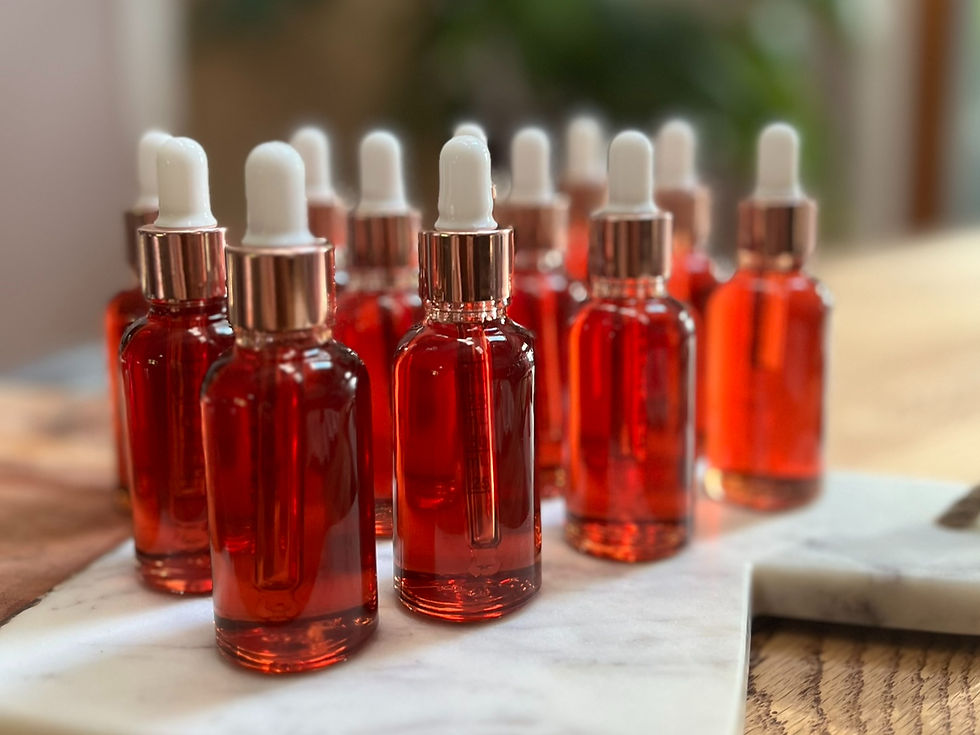Thousands of rose petals in a jar
- Ann De Corte
- Jul 12, 2024
- 2 min read
Updated: Aug 17, 2024
Amazing bushes of dark red roses are standing against the wall of a beautiful home in Landenberg. Little did they know they would be headed to another home, and turn into rose glycerite six weeks later… I was happy about the color of my glycerite, the darker the rose, the darker the glycerite.
Have you stopped and smelled some roses lately?
Emotional balancer
If you are interested in this topic, read more about it in this article.
Making a Herbal Glycerite is so easy and rewarding
Since working with plant material during summer months has become a hobby of mine, I really wanted to try out how to make glycerite. Glycerites are alcohol-free herbal preparations made with vegetable glycerin which itself is an excellent humectant that attracts moisture to the skin.
So, I covered the fresh rose petals with vegetable glycerin and allowed it to sit between 4-6 weeks.
Interested in making it yourself?
This blogpost of Jade Shutes is very helpful and explains every step of the way.
How to use Rose glycerite?
Rose glycerite can be added to:
Herbal teas, spritzes, smoothies to impart its sweet aromatic qualities. You can add a teaspoon to a tablespoon and even taste it undiluted, or you can add some water.
Recently I started to add 1 ml to my herbal teas just before going to bed. Good choices for really slowing down and relaxing are the ones with chamomile, passionflower and lemon balm. Just try out what works for you and write down your experiences. Notice how your body feels and reacts.
Rose glycerite is also used to:
Help the skin retain moisture. Glycerites are often used in skin care products like serums, lotions, crèmes. Glycerin draws water into the skin's outer layer from deeper levels of the skin and the air, and it can form a protective barrier to keep water from escaping.
I recently added some in my shower gel.


_edited.png)



Comments